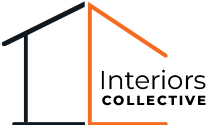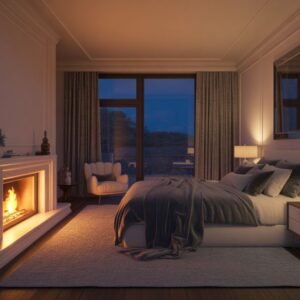Panels PVC are a game-changer, and they can transform any space with their wide range of designs and finishes. Just imagine your walls adorned with sleek, modern patterns or even textures that mimic wood or marble – all without creating a hole in your pocket!
If you’re not already familiar with this fantastic material, PVC panels or polyvinyl chloride panels are like the superheroes of interior design. They come to the rescue when you need something that’s not only stylish and versatile but also incredibly practical.
So, whether you’re looking to revamp your bathroom, give your kitchen a fresh look, or just add a touch of elegance to your living room, Panels PVC might just be your new best friend. Read this article till the end to know how you can add innovation and elegance to your house using PVC panels.
Types of Panels PVC
Panels PVC is a versatile material that comes in various forms, each designed for specific applications. Understanding these PVCs’ different types and variants can help you choose the right one for your needs. Here are the various kinds of Panels PVCs:
Panels PVC Sheets:

Panels PVC sheets are flat, rigid forms of material that are widely used in various applications. These sheets are known for their durability, ease of handling, and versatility. These PVC sheets are further classified in multiple categories:
- Standard Sheets: Standard sheets are used for construction, signage, and cladding. They provide a smooth surface and are easy to cut and shape.
- Foamed Sheets: These sheets are lightweight and have a foamed core, making them ideal for applications where weight reduction is essential, such as in exhibitions and displays.
- Textured Sheets: Textured sheets offer an aesthetic appeal and are used in decorative applications, such as wall coverings and furniture.
Panels PVC Panels:

Panels PVC panels are larger and more robust compared to sheets. They are often used in structural applications where strength and durability are crucial. These PVC panels are further classified into various categories:
- Solid Panels: These panels are completely solid and provide excellent impact resistance. They are used for PVC wall paneling in construction, industrial settings, and as protective barriers.
- Hollow Panels: Featuring a hollow core, these panels are lightweight yet strong. They are used for applications such as partitions, ceilings, and cladding. They can be used as PVC wall panels.
- Reinforced Panels: Reinforced with additional materials like fiberglass, these panels offer enhanced strength and durability. They are used in heavy-duty industrial applications and high wear and tear areas.
Panels PVC Films:

Panels PVC films are thin, flexible layers of material used primarily for wrapping, covering, and protecting surfaces.
- Clear Films: These transparent films are used for protective coverings, packaging, and applications where visibility is required, such as window films and protective barriers.
- Colored Films: Available in various colors, these films are used for decorative purposes, branding, and applications where color coding is necessary.
- Adhesive Films: These films come with an adhesive backing, making them easy to apply to various surfaces. They are used for decals, labels, and temporary surface protection.
Specialized Variants:

It also comes in specialized variants tailored for specific industries and applications.
- Fire-Retardant PVC: Designed to resist ignition and slow the spread of fire, this variant is used in applications where fire safety is a concern, such as in public buildings and transportation.
- UV-Resistant PVC: This variant is treated to resist degradation from ultraviolet light, making it ideal for outdoor applications where exposure to sunlight is significant.
- Anti-Static PVC: Used in environments where static electricity could pose a risk, such as in electronics manufacturing and cleanrooms.
Panels PVC vs. Traditional PVC
When choosing between Panels PVC and traditional PVC, it’s essential to understand the differences in their properties, uses, and benefits. Here’s a comprehensive comparison to help you make an informed decision.
Panels PVC:
Panels PVC refers to polyvinyl chloride sheets or boards used primarily for wall and ceiling cladding. They are known for their versatility, durability, and ease of installation.
These PVC are lightweight and can be easily cut, making them straightforward to install. They often come with interlocking systems that ensure a seamless fit. They are available in a variety of colors, designs, and finishes, such as wooden, marble, or other materials, providing a high-end look at a lower cost. These PVC panels are highly resistant to moisture, making them ideal for use in bathrooms, kitchens, and other areas prone to dampness. These are low-maintenance PVC panels as they are easy to clean and maintain. They do not require painting or sealing, and they are resistant to mold and mildew.
However, we must note that PVC is a plastic, and its production and disposal can have negative environmental effects. It is not as eco-friendly as some other materials. For inspiration on how to use Panels PVC in your home, check out our article on 10 Decorating Ideas in 2024 to Spruce Up Your Space.
Traditional PVC:
Traditional PVC (polyvinyl chloride) is a widely used plastic material known for its durability and versatility. These products often come with panels, frames, or other structural components that can be assembled or installed. Traditional PVC is Widely used for water supply lines, drainage systems, and irrigation. They are also Commonly used in constructing frames due to their strength and weather resistance.
Traditional PVC is Known for its long-lasting nature and resistance to various environmental factors. They have been extensively used and tested in numerous applications over decades.
Traditional PVCs are recyclable, but recycling rates can be low due to contamination and lack of facilities. The production of these PVCs involves chlorine and other chemicals, which can have environmental impacts.
Traditional PVCs are generally cheaper, making them cost-effective for many applications. However, these may require more maintenance and replacement, especially in exposed environments.
In conclusion, Panels PVC panels are a versatile and cost-effective solution for various applications, from home improvement projects to industrial uses. Their durability, ease of installation, and low maintenance requirements make them an excellent choice for anyone looking to enhance their space with a modern, clean look.





